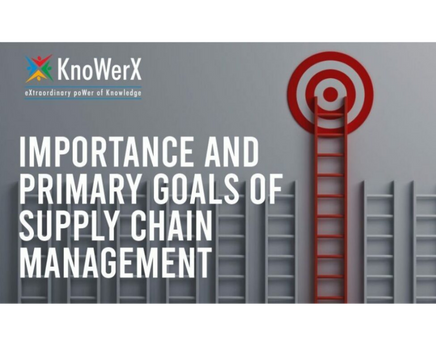What is the difference between the various Black Belt “Levels”?

Lean Six Sigma Black Belt Education and Six sigma certification in Supply Chain Management will advance your career by giving you a thorough understanding of not only the technique but also the leadership position within Six Sigma. A Lean Six Sigma Online Black Belt Credential in Supply Chain Management will prove your ability to lead Six Sigma project implementation. Six Sigma is a process that identifies variants or faults in a process by using quantitative concepts and techniques. An Affiliated Six Sigma Certification in Supply Chain Management indicates that a person has a certain level of understanding in the research and application of this technique. This type of certification will elevate your life and make you a more valuable resource in any industry. Reasons to choose a sigma six training Reduce costs by eliminating errors When specialised training is selected, Six Sigma aims at identifying and eradicating any wastage of resources in a supply chain. This is one component of the Six Sigma methodology that has a high demand for Six Sigma Certified Professionals. A major logistical issue for businesses, particularly in today’s competitive business environment, is how to optimise inventory and reduce lead time. This occurs in the supply chain, and the Six Sigma process assists your SCM professionals in devising effective ways to achieve both high quality and maximum speed at the same time. Enhance Quality The process of removing errors from products innately leads to higher quality. When goods do not reach their target audience as rapidly as feasible, their perceived quality suffers. A specialised Six Sigma training in Supply Chain Management will provide your employees with the tools they need to better every process from the moment of origin to the point of usage. When it comes to hiring Supply Chain Managers, all of the world’s largest companies know to put money into this skill set. What are the various levels of the black belt? Six Sigma Champion A Champion is the first tier of Six Sigma credential. A Champion isn’t a belt in and of itself, but it serves an important role in a Six Sigma project or organisation. The primary responsibility of the Champion is to ensure that operations and maintenance projects are in accordance with the strategic level business goals. Six Sigma White Belt The Six Sigma Certification process begins with this level. You begin at the floor level by resolving local problems. White Belts will collaborate with higher-level experts, such as those with a Green or Black belt, to fix each problem. A White Belt’s purpose is to learn the basic concepts of Six Sigma. Six Sigma Yellow Belt Yellow Belt for Six Sigma delves into the details of how Six Sigma functions, what it is, how the standards can be applied in the workplace, and where you should focus your time as you observe the process. A Yellow Belt specialist is well-versed in the fundamentals of Lean Six Sigma, that include all aspects of the D-M-C stages. As a result, researchers recommend that students enrol in a class to receive the appropriate guidance. Yellow Belt Lean Six Sigma is where the excitement of eliminating defects from enterprise systems begins. Six Sigma Green Belt A Six Sigma Green Belt assists a Six Sigma Black Belt by analysing and resolving quality issues, as well as participating in quality-improvement projects. Green Belts also help to review information and suggestions submitted by lower-tiered belts. Green Belts may have enough expertise to manage and control their own projects at times. It all depends on the extent of experience in a particular field. Six Sigma Black Belt A Six Sigma Black Belt is familiar with Six Sigma ideologies and principles, as well as the assisting systems and tools. This individual exemplifies leadership role and comprehends all facets of the DMAIC model in conformance with Six Sigma principles. Black Belts are renowned as change agents within organisations. They understand group dynamics and are in charge of allocating tasks and functions to team members. Why choose KnoWerX for APICS certification courses? KnoWerX is well renowned in the field of supply chain management and have been conferred the title of SCM Guru. You can get certified training of all black belt levels under the guidance of experts and boost your career. You can also browse through many different courses on SCM at KnoWerX.
IMPORTANCE AND PRIMARY GOALS OF SUPPLY CHAIN MANAGEMENT

Talking in line with the definitions of supply chain management, it can be deemed as a complicated endeavour that transcends the scope and capabilities of a single firm. Establishing and maintaining a supply chain network demands a substantial amount of effort. Therefore, SCM holds great importance. Also, it has specific goals that it aims to achieve. So before you go on to choose courses on SCM, let’s understand its importance and goals. Importance of Supply Chain Management Supply chain management forms an essential part of a business’ success. The journey from creating an idea to developing the end product can be a complicated process with multiple moving parts. Here, a well-managed and functioning supply chain can reduce a company’s operating expenses and drive-up profits. This efficiency can be achieved in every aspect of the chain – right from creating the idea to marketing the final product. Goals of Supply Chain Management Creating customer value One of the primary goals of supply chain management is to create value for customers. It is important as customers are the lifeblood of any organization and necessitate the existence of a supply chain. Consequently, SCM should aim to meet or exceed customers’ needs. Fulfilment efficiency SCM ensures that inventory is readily available in customer-facing positions to meet the demand. Another important goal in fulfilment efficiency itself is cost reduction. Organizations must work to ensure that they match supply and demand on time by making the finest use of all the available resources. Enhancing supply chain resilience Apart from the normal business issues, companies can face abrupt supply chain interruptions which can be severe at times too. They can impede the flow of goods as well as expose the company to reputational as well as financial harm. So, SCM aims to make the processes resilient to these factors that might disrupt the flow of business functions and processes. Improve flexibility Another important reason for investing in supply chain management capabilities is the potential to adapt to change. Supply chain management can help businesses in adapting to multiple challenges such as globalization, rising consumer expectations, and economic instability. Having an adaptable and responsive supply chain will make you capable of reacting to these changes with minimal disturbance. Monitoring financial success One of the most important and obvious goals of SCM is to contribute to the financial performance of the organization. With a focus on cost control and revenue development, professionals can understand the organization’s value of supply chain management. The objective here stands as the maximization of competitive advantage as well as shareholder profit that makes financial success important. SCM guru KnoWerX offers the most efficient APICS certification courses that you can ever come across. As an SCM guru, we ensure that you get the right training and certification to help you get your desired job role and growth. For more information, always feel free to get in touch with us. We’ll be glad to assist you.
What is the difference between Six Sigma and Lean Six Sigma?

Even the most tried-and-true business methods and technologies must evolve over time to meet the needs of the industry and today’s businesses. Six Sigma is no exception, with numerous branches, specialisations, and schools of thought sprouting from the original idea over time to meet new demands. Thus, it has become extremely necessary for organizations and individuals to have a six sigma certification to further commence their knowledge of the field. In one instance, two opposing schools of thought have combined to create a single, unified methodology capable of addressing multiple objectives. This is Lean Six Sigma, a management method that develops on Six Sigma principles while focusing on efficiency. Both approaches aim for the same thing: more efficient processes that result in a higher bottom line. The difference is seen in how they approach achieving that goal. What is Six Sigma? Six Sigma was created with a single goal in mind: to reduce the latency and defect rates in manufacturing processes through descriptive statistics. Six Sigma accomplishes this through the use of one of two 5-step strategies: the DMAIC or the DMADV method. Both methods have distinct applications. DMAIC is an acronym that stands for Define, Measure, Analyze, Improve, and Control. Recognizing the problem you’re attempting to solve, taking note of your current methods, identifying and developing a solution, and preserving that solution in the future are all part of this process. This is ideal for supply chain performance problems or when only process adjustments are required, rather than an entirely new function. DMADV (Define, Measure, Analyze, Design, Verify) comes into play here. The first stages of the project are identical, but the Design stage allows for the development of a completely new instrument to solve the issue. The Verify step then concentrates on ensuring that the required solution is still solving the problem. Six Sigma is all about inspecting the supply chain for flaws, identifying problems, and resolving them as efficiently as possible. There are also sigma six training courses provided by KnoWerX which are affiliated with the APICS Certification program. What is Lean Six Sigma ? The Lean approach, on the other hand, is wholly focused on reducing waste and giving full value to customers with the least level of investment possible. In the 1980s, the term “Lean” was first used to define the Toyota Business System, a business philosophy that made the organization run more efficiently. It involves every level of an organisation, guiding new processes and driving resource allocation. The primary distinction between Lean and Six Sigma is that Lean is less centred on manufacturing and more often shapes all aspects of a business. Lean Six Sigma encompasses two main approaches, resulting in a potent toolkit for waste minimization. The DMAIC method offers an excellent route map for finding solutions to problems as businesses wish to understand where they may have wasteful practices in place. This methodology synergy serves primarily to help eliminate the eight types of waste, expelling anything from a process – whether material, time, or effort – that does not add value. What is the difference between Six Sigma and Lean six sigma? Lean Six Sigma is ideal for businesses that want to standardize their procedures and provide as much value to their customers as possible. The DMAIC method’s staged thinking and clear blueprint can be a useful resource when implemented to any strategic plan, not just defect preventative measures as in conventional Six Sigma methodology. As the distinction between Lean and Six Sigma becomes increasingly blurred, entirely new methodologies and philosophies are bound to arise. The next great innovation in Six Sigma thinking will be experts who can help businesses manage these complicated refinements. About KnoWerX’s six sigma and lean sigma program KnoWerX provides comprehensive Lean Six Sigma (LSS) certificate programs as well as various courses on SCM for business professionals with different levels of Lean Six Sigma experience. The Lean Six Sigma certificate programs prepare professionals to meet the high demand for Lean expertise, abilities, and certification. The title SCM Guru is not bestowed lightly. We earned this title because of our expertise and extensive understanding, as well as the thousands of people who have benefited from it.
